"By now you must know that your father can never be turned from the Dark Side. So will it be with you." -Emperor Palpatine, Return of the Jedi
You've heard about dark matter. It's the notion that the Universe is somehow very much different than the small corner of it that we're most familiar with.
When we look at our Solar System, we can add up all the rocky planets, the gas giants, the asteroids, moons, and comets, as well as the entire Kuiper belt, and find out just how much of our neighborhood is dark.
And we can compare that with the Sun, the one thing in our Solar System that emits its own light. To no one's surprise, the Sun makes up 99.8% of the mass of our Solar System. (In fact, Jupiter, the next-largest mass, makes up 0.1% on its own, equal to everything other than itself and the Sun combined!)
Not every star is like the Sun, of course; many are bigger and brighter, while the vast majority are smaller and dimmer.
After performing a census of all the stars visible in our night sky, averaging all the light emitted from stars and the masses of all the stars together, we (perhaps surprisingly) find that our Sun gives off less light for its mass than the average of all stars in the galaxy!
The biggest, brightest, most luminous stars dominate the overall light given off by a galaxy, and taking these measurements allows us to construct a mass-to-light ratio for normal, star-dominated matter. It turns out to be about three times as luminous, per solar mass, as our Sun is.
So when we look out at a large object in space, containing anywhere from a few hundred thousand to many trillions of stars, if we measure the amount of light coming from it, we can know how much mass there is in the form of stars. That's just basic astronomy.
But we also know how gravity works. Whether you see a single spiral galaxy rotating or thousands of galaxies zipping through a cluster, if you can measure the speeds at which this collection of matter moves, so long as you understand the connection between gravity and mass, you can figure out how much total mass is in one of these objects.
In a simple, ideal world, these two ways of measuring the mass -- from starlight, on one hand, and from the effects of gravity, on the other -- would give you equal numbers.
But they don't.
They don't even come close, in fact. Whether you take a single galaxy comparable in size to the Milky Way, or a huge cluster of hundreds or even thousands of galaxies, we find -- pretty much every time -- that there's more mass than stars can account for.
How much more, you ask?
A factor of fifty.
"Big deal," you say, "there are plenty of ways that matter can be there and not emit visible light."
Of course, you're right. The Universe ought to be filled with not just planets and and rocky objects, but also with interstellar gas, dust, plasmas, dead stars, black holes, and pretty much anything else you can imagine that's made up of protons, neutrons, and electrons that isn't a star.
So we try to add up all the different sources of protons, neutrons, and electrons, and compare it to the total amount of mass we see. The results are staggering.
We look at huge X-ray surveys of galaxy clusters, and determine how much of the total mass is in the form of stars, gas, dust, and everything else that known matter -- the stuff made of protons, neutrons, and electrons -- can make up. Very consistently, we get a number between 13-17% of the total mass, but no more than that.
Much more than exists in stars, to be sure, by a factor of 5-to-7. But still not nearly enough to account for everything.
Now, here's where it gets interesting.
Every observation we make supports this picture: 15-17% of the total mass is protons, neutrons, and electrons (henceforth just called baryons). But the total amount of mass -- 100% -- is made up of mostly some non-baryonic dark matter, about 83-85% of the total, or about five times as much as the normal, baryonic stuff.
For galaxy clusters, this is confirmed by not only the peculiar velocities of individual galaxies and X-ray emissions, but by gravitational lensing, as above, and gravitational redshift, as shown below.
The total amount of matter is simply too great to be accounted for by baryons alone. What's more than that, this dark matter is distributed much more diffusely -- in large, fluffy halos -- than the stars or gas that we can see.
But it isn't just clusters that tell us how much total matter there is, nor are clusters the only source for our information on how many total baryons there are.
We can measure the total amount of matter by studying the peculiar velocities of galaxy pairs.
We can know the total amount of baryons by measuring the abundances of the light elements left over from Big Bang Nucleosynthesis. Again, we get that the total amount of matter is about six times as much as can be present in baryons alone.
We can both measure and simulate the large-scale structure of the Universe, and once again, we find that the only way to get agreement is to have there be about five times as much dark matter as there is baryonic matter.
And within this framework, there are all sorts of different quantities we can use to test this number. Just to name a few: baryon acoustic oscillations, the two-point correlation function, and Silk damping in the matter power spectrum all point towards this same picture of a Universe with about a 5:1 ratio of dark matter to baryonic matter.
And of course, you know of one more.
The pattern of fluctuations seen in the Cosmic Microwave Background, or the leftover radiation from the Big Bang. The scale and magnitude of these microKelvin fluctuations allows us to determine -- solely based on the laws of physics -- just how much baryonic matter and how much dark matter there is.
And, once again, we find that the total mass of the Universe's dark matter outnumbers the total mass of the baryonic matter by that familiar ratio of about 5:1.
So, every measurement sensitive to dark matter indicates that it's there, and there's about five times as much of it as there is of normal matter: the protons, neutrons, and electrons that make up everything on Earth.
So what is this dark matter? What can we say about its properties?
Well, we can take a look at its temperature, for one. If dark matter is hot, matter has a hard time collapsing and forming structure on smaller scales. But the colder -- or having less kinetic energy -- this dark matter is, the earlier and earlier we can form structure on the smallest scales.
So if we take very distant light sources -- things like quasars -- we can look for absorption features on small scales, known as the Lyman-alpha forest. The earlier these features are sharp and present, the colder our dark matter has to be! What do we find?
We find that dark matter can't be hot. Given that we know the temperature of the Universe from the Cosmic Microwave Background, we can rule out massive neutrinos as a dark matter candidate, because they'd be too light (and therefore too hot, given the ratio of kinetic energy to mass) to form this structure.
But dark matter could be either warm, with masses of somewhere from about 5 keV/c2 up to maybe 1 MeV/c2, or cold, where it would have to have even heavier masses or, like the very light axion, be born without kinetic energy. (Searches for axions have come up disappointingly empty thus far.)
So how would we distinguish warm from cold dark matter?
We can look at the cores of galaxies, and see whether they have cusps, like cold dark matter predicts, and they don't!
Multiple studies confirm this as well: there are the wrong number of dwarf galaxies for cold dark matter, there's the wrong amount of power on the smallest scales, and the cores of galaxies have the wrong amount of overall matter density for cold dark matter!
So maybe, you think, dark matter isn't cold, but warm.
The simulations match up better, and warm dark matter is better for astronomy. Standard cold dark matter doesn't give you the right predictions on these small scales. But when we look over on the physics side, there are no known particles that could be warm dark matter! What could they be?
Sterile neutrinos?
Maybe, but even the experiments that indicate them as a possibility (LSND, miniBooNE) give the wrong mass (they're too light). If there are warm dark matter particles, our electron-positron collider experiments should already have detected them, and yet... nothing.
So what are our other alternatives?
Maybe the dark matter is cold, but it interacts with itself. We know that dark matter doesn't collide with baryonic matter from experiments like CDMS and Edelweiss, but maybe it collides with other dark matter particles? This would allow us to get dark matter that looks isothermal at its core, rather than the other models that fail to match up with observations.
But we have a spectacular result coming from these colliding galaxy clusters, with the best example being the Bullet Cluster.
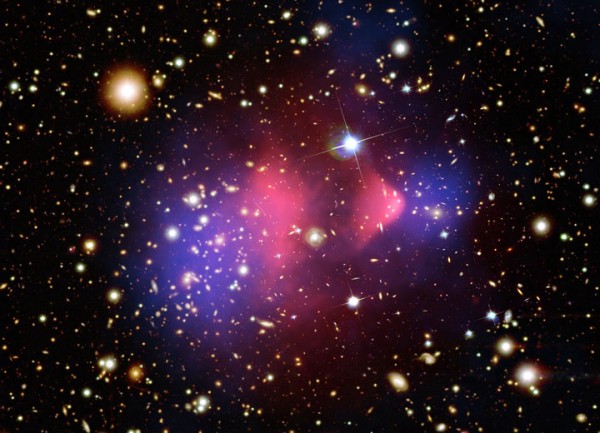
Image credit: NASA / CXC / CfA / M.Markevitch et al., STScI, Magellan / U.Arizona / D.Clowe et al., ESO WFI.
If you want dark matter to self-interact enough to make your halos isothermal, it would be too "sticky" to give you the mass distribution found in the Bullet Cluster! So none of the models are entirely satisfying.
And yet, dark matter does so much, and whether you look at the whole suite of evidence simply or under heavy scrutiny, dark matter succeeds in a whole bunch of places where modified gravity fails.
In the meantime, a number of teams, including DAMA, CoGeNT, and CRESST all claim to have detected dark matter recoiling with normal matter. And we know they're not entirely correct.
These claims are not only inconsistent with one another, but also with much more sensitive direct detection experiments, CDMS and XENON.
Casting even further doubt on their results, these teams don't even know what they're detecting. (In other words, they cannot fully -- or even primarily -- account for their background in the detector.) They do see an annual modulation in the signal, which they attribute to the Earth's motion through the galaxy's dark matter. But other experiments refute their results, which in turn are inconsistent with one another's results.
So putting all of this information together, what does it mean?
Astrophysically, there's got to be some type of dark matter out there, and it needs to be about five times as abundant as the normal, baryonic matter we have. The indirect evidence is overwhelming. If you try to build a theory without dark matter, you simply have to throw out a whole suite of very well-tested and verified physics, and you still cannot explain all the observations detailed above.
So what do we know about this dark matter? It can't be hot, and it also can't be completely cold and collisionless. There are constraints on how hot it can't be, and also on how large its self-interacting cross section can be.
But, as far as particle candidates go, there isn't a single compelling one. Warm dark matter seems to be the best astrophysical fit, but as for the type of particle behind the majority of matter in the Universe? We know practically nothing about it. And experimental claims of direct detection are, at best, sketchy. (And at worst, bogus, spurious and/or heavily misinterpreted. As Resonaances notes: "[the] experiment is closing in on IDM; what is not clear is whether that stands for Inelastic or Italian Dark Matter.")
The mystery continues, and while we don't have the answers, here, at least, are the pieces of the puzzle. Now, put it together, and the Nobel is yours!


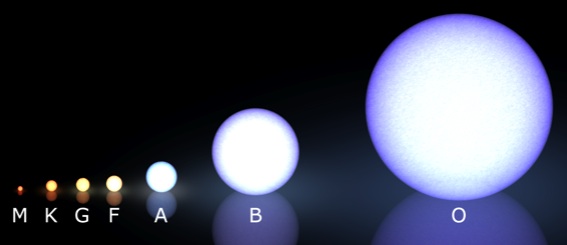
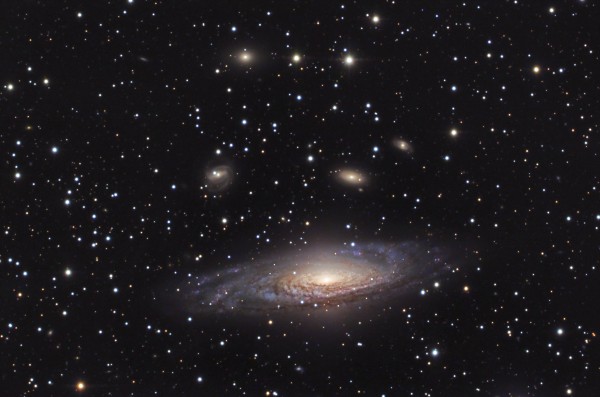
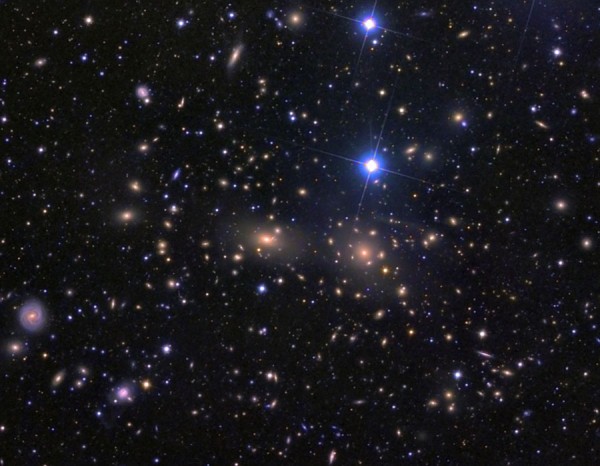
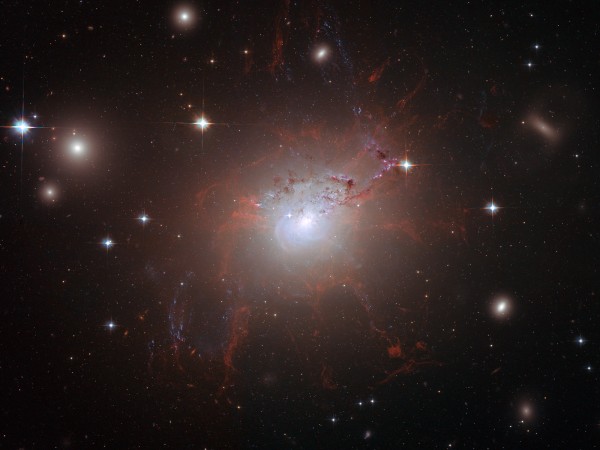

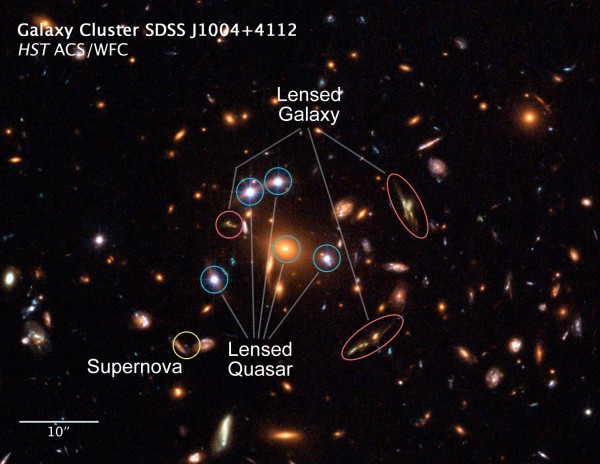



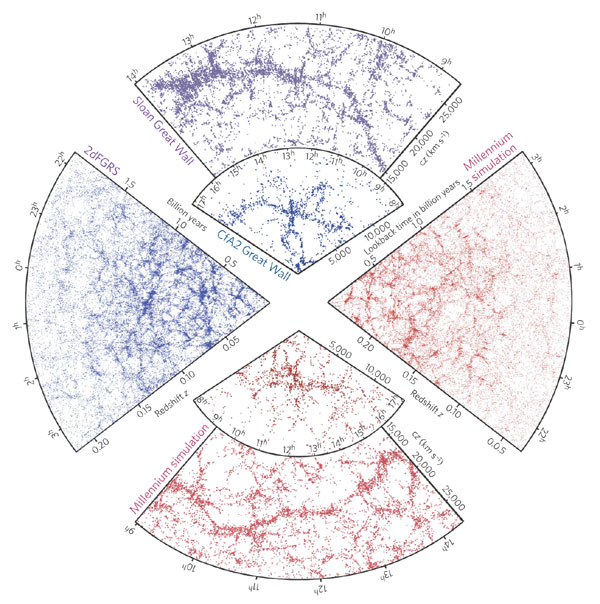

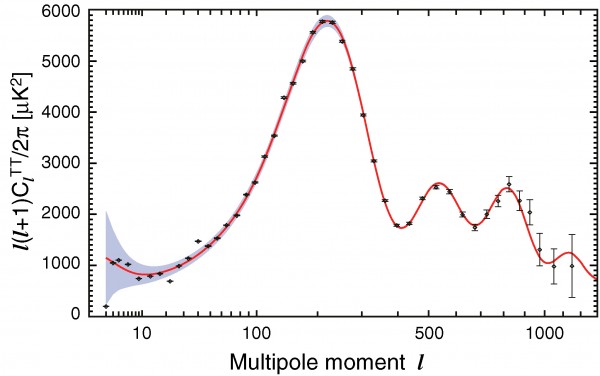

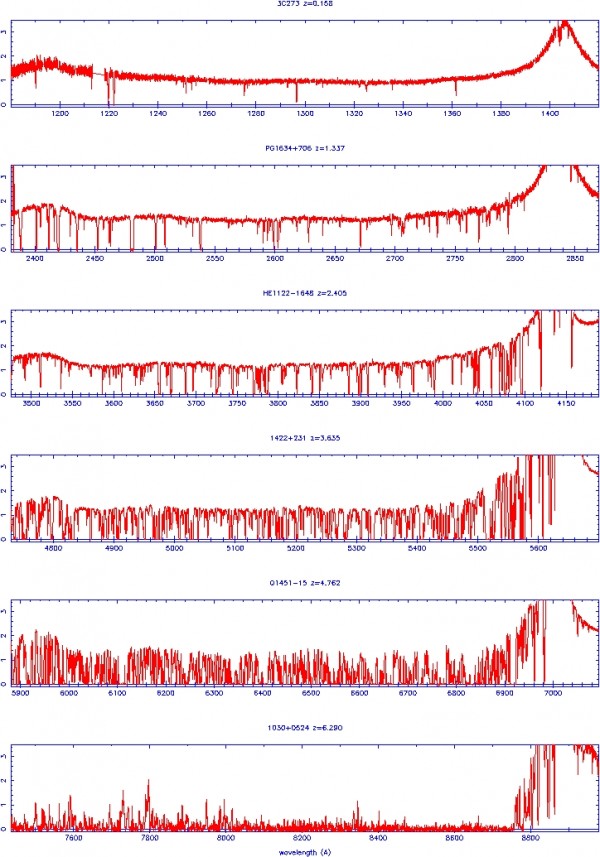
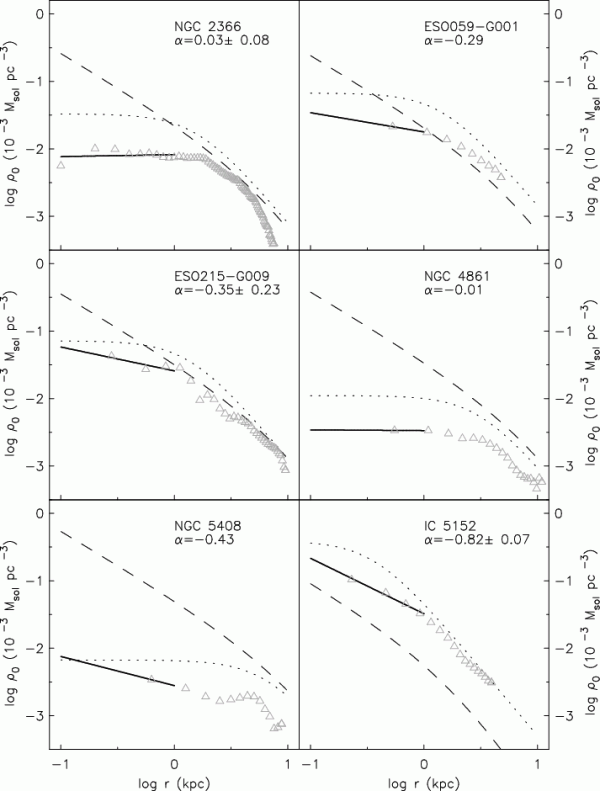
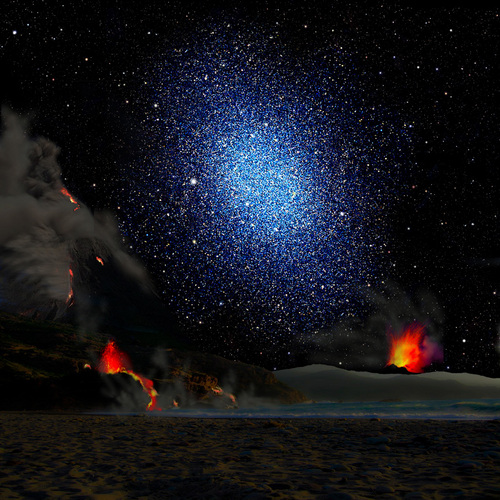
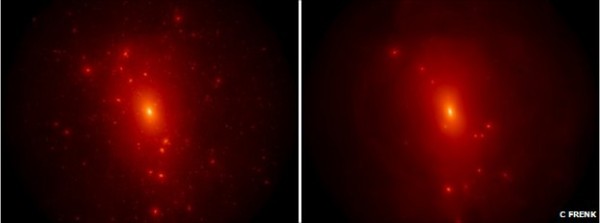
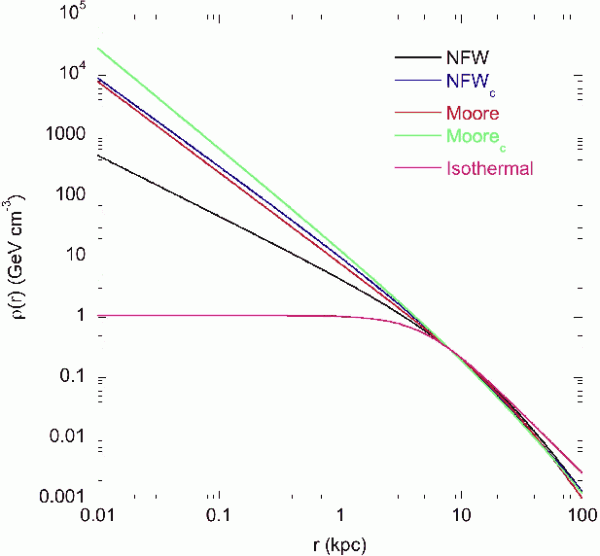
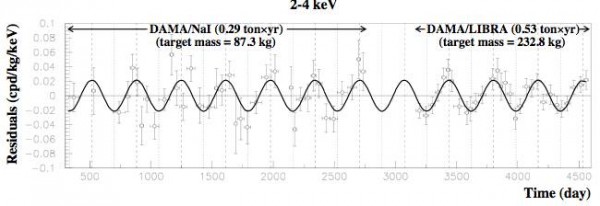
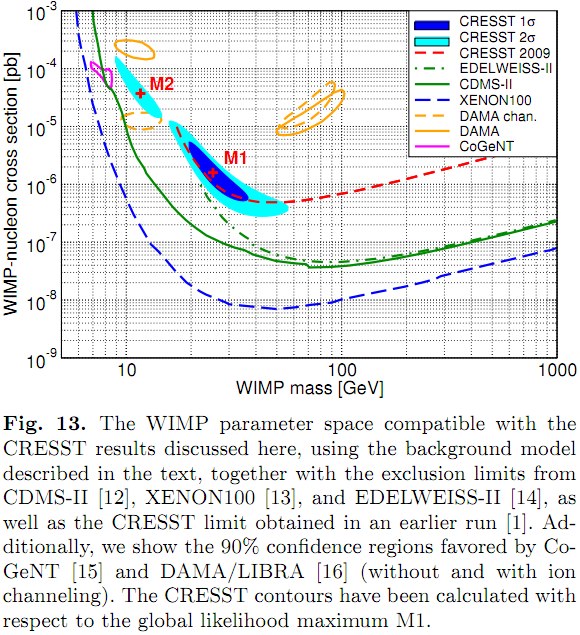
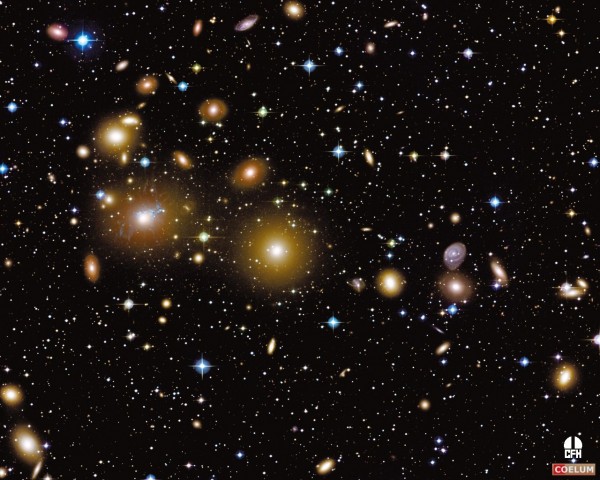
Great post, one of the more detailed articles on DM so far!
A thought comes to mind... Dark Matter black holes. Now there's something to think about. lol
But on a serious note, would an idea that DM could attract itself and make "objects" like baryonic matter does, be insane? Like planets? Something like Jupiter.. gas spheres made of DM?
Seems that if it posses mass and gravity that something like that ought to happen? Any thoughts?
"But we also know how gravity works."
Do we really understand it?
In an (accelerated) expanding universe gravity becomes less important as a force.
Since the distances between objects will sooner or later be so great that the influence of gravity as a force would be negligable.
Gravity is counteracting this expansion - since it is an attractive force only. "Dark Matter" shows this same attractive force to be far greater than we would expect in an expanding universe.
The problem involved starts with understanding entropy.
Ludwig Boltzmann thought that an expanding gas is equivalent to a higher entropy.
A great scientist, no thought about that. But what if he was wrong?
Please take a look at steam as a gas for instance. If there is enough space to allow expansion this water vapor condenses to droplets of water. There is more order in the process - because matter and space are more easily distinguished.
This water can develop further into extreme delicate ice- crystals creating even more order.
Expansion generally is equivalent to more order - not disorder.
But this universe is going to a more disorderly state, fire is more easily created then a fridge.
Expansion is equivalent to more cold, not heat.
And contraction is equivalent to more heat. Which we observe in this universe.
There is a tendency to more disorder (heat).
@1 Sinisa
Ethan can give you a better answer, but I believe that dark matter can't come together and make large objects is that it doesn't interact with itself. If two dark matter particles are attracted to each other (and they are, by gravity) then they will simply pass through each other.
@2 The Bobs,
Ok, they pass through each other, but gravity pulls back. If the momentum is smaller than gravity, those two particles will swing back to one another again, like see-saw, with every oscillation the distance is smaller, until eventually they come to a stop or very near to it, so you have twice the mass in the same space (or near to it), then another particle comes along... and so on. Snowball effect. The fact that they pass through each other instead of bouncing apart doesn't negate the gravity effect. Right?
A great mass of dark matter which only interacts gravitationally sounds like an easy way to make a black hole. Yet somehow all this dark matter is presumed to be distributed in just the right way so that stars follow the observed orbits in galaxies. Amazing.
Isn't all this based on the Hubble distance scale and wasn't that largely determined by assuming all class 1a supernovae have the same intrinsic brightness?
Another question was bothering me lately: is the dark matter somehow uniformly distributed in space? Because if it is, if it is here with us in the Solar System, shouldn't we detect some strange impact on the gravitational model of our system? Some blob of dark matter the same mass as our Sun (to say nothing about 5 times the mass), even if uniformly distributed, should change a lot the way we fly around in space.
Sinisa / The Bobs / Edwin,
If dark matter only interacts gravitationally, then it can never collide, exchange momentum or stick together. It can also -- and this is important -- never exchange or lose angular momentum!
Imagine a great big cloud of gas. Yes, gravity will cause it to collapse. But if you want to make stars and planets out of it, it needs some way to collide. For normal matter, that's taken care of by electromagnetism. But for dark matter? Turn off all the forces in your gas cloud except for gravity, and what would happen? You'd get that great big cloud, and although dark matter would fall in towards the center, it would pass right through, and zip back out again until it was just as far away as its starting point, and then it'd do it all over again. For something like our galaxy, a typical dark matter particle has had enough time to do this about 20 times.
But no, to make something like Jupiter, a black hole or even a cloud of gas, dark matter would need some type of interaction beyond gravity. There are very stringent constraints on how strong these interactions can be, and they're at most so weak they make neutrinos look like electrons by comparison.
BadDragon,
That is a good point! It isn't obvious whether that would give a large enough effect to matter or not, so you have to do the calculation. Interestingly enough, I have a special connection to this question, as it was the last interesting calculation I ever did before starting graduate school, while interviewing with the professor who would eventually become my Ph.D. supervisor! The presence of dark matter uniformly throughout our Solar System should, for instance, make it so that Pluto sees an effectively larger mass for the Sun than Mercury does. But would that difference be observable? The answer, unfortunately, turns out to be an emphatic no, by about seven or eight orders of magnitude. However, if we observed our Solar System for about a few billion years (instead of just a few hundred), we might be able to see its effect. It's possible in principle, but not in practice. Hopefully, the above cosmological tests in the article are better ones for measuring dark matter!
Ethan,
I forget, exactly how did non-interacting dark matter get angular momentum to begin with?
Perhaps physicist Lisa Randallâs speculations about gravity leaking into our familiar, visible universe from a higher spatial dimension (which she refers to as the âbulkâ) might have some merit.
Perhaps Invisible DM is the source of the gravitational force emitting from the âbulkâ. If thatâs the case, perhaps the wrong gravitational sign has been stuck in front of DM.
Would changing the sign endow DM with the any of the properties needed to make MOND seem plausible?
(No, I did not claim that I believe MOND to be right).
Edwin, at some point, you have to give your dark matter particles initial conditions: positions and velocities. Even if you start them off at all positions with zero velocities, the baryons that you see will have velocities relative to the dark matter, which will be attracted towards the center of whatever gravitational perturbation it's closest to. Assuming the impact parameter (i.e., the difference between the velocity's direction and the direction to the center of mass) is anything greater than zero (and 10-18 meters counts), there's your initial angular momentum.
Alan L., you can always make a model that's more complicated than normal, massive particles in our Universe. Although I haven't seen it done, I would be shocked if a gravitational interaction sourced by extra dimensions couldn't be modeled to explain MOND. The problem is it's very likely to give you a whole bunch of other nasty junk that isn't observed on other scales, which is, for example, a problem that MOND has if you apply it to anything other than single galaxies.
Yeah, yeah, I get that. But... you know... I am an engineer. I would rather have something happening closer to my hands to measure, probe and smell than gazillions light years away :) That's why a closer to home phenomenon is more appealing to me. Hence, the question.
Here's a question for the experts. If observational evidence indicates that the best fit for dark matter is warm, is there any evidence to suggest that this couldn't be an average temperature? Can you assume the total dark matter population consists of some distribution of cold and hot dark matter candidate particles and get a result that matches observation and has known particle candidates?
RowdyReptile, yes, there is a difference. Models known as CHDM models (a mix of cold and hot) can be compared to WDM. What unfortunately happens is that the Lyman-alpha forest would be suppressed on small scales due to the presence of any HDM at all. The suppression wouldn't be as severe as if it were pure HDM, but if -- for example -- you had 10% HDM, you would have significantly less power on those small scales, and that would show up.
We've basically ruled out any hot dark matter; the maximum allowable amount is something like 0.5% of the critical energy density.
BadDragon, I think we would all like to just be able to detect it directly, rather than look at any of the indirect tests. (The Solar System one is a good idea; we'd have to measure the precession of planetary perihelia to something like micro-arc-second/century precision to get there.) Unfortunately, if dark matter interacts gravitationally and no other way, we have no conceivable way of making that test. Hence, the only direct detection experiments assume some type of nuclear interaction. It could happen, but it is by no means a certainty.
What about producing it? It looks like the ratio baryonic/dark decreased over time, so maybe there is a transformation process (I can not imagine which). Then shoot some photons to it and see their trajectories being curved.
What about the Pioneer Anomaly?
http://en.wikipedia.org/wiki/Pioneer_anomaly
Could that be due to dark matter? It is in the right direction.
I think that a new spacecraft with redundant atomic clocks and antenna to look at multiple pulsars (to get location from arrival time), and perhaps lasers and retro-reflectors for better ranging might be in order to look for gravitational effects of dark matter.
Or maybe even better, multiple spacecraft mapping fine-scale gravitational anomalies the way the moon is soon to be mapped.
The Pioneer anomaly has been explained by conventional means as reflection of particles off the spacecraft itself by better modeling of the interaction. No dark matter or any fancy new physics needed.
Thanks Ethan, that makes sense. Are there any models that consider the possibility of changes over time in the distribution of dark matter components? Don't stars drive changes over time in the distribution of normal matter? Hypothetically, if stars were also responsible for something similar with dark matter (e.g. production of HDM), then wouldn't the Lyman-alpha forest need to be present before the production of HDM could start?
Personally, I'm no physicist, but it certainly is fun to speculate.
If non-baryonic dark matter continues to be elusive, despite increasing sophistication of detection equipment, perhaps a closer look at the contour of space/time in baryonic-thick locales is called for. Perhaps the curve of space/time is not "smooth," but has steps or variations like what you'd see in a side-on view of an old vinyl record, revealing the substrate of a bulk entangled with the baryonic matter in our own three-dimensional universe. (This could also account for the phantom nature of the yet-to-be-observed graviton).
Factor into that the "heaviness" of cosmic rays, (the fact that particles at near-light velocity have many times over their own mass), AND more black holes, AND more of the usual stuff (gas, planetismals, comets, brown stars, etc.), and something like the eighty-odd percent of missing matter begins to emerge.
Could a well shielded black hole serve as a Dark Matter detector? If you can keep track of the mass of a black hole very carefully, and ensure that all normal matter / energy entering and leaving is accounted for, any extra change in mass would be due to Dark Matter particles being absorbed past the event horizon.
The other question - binary starts rotating around each other are predicted to radiate energy off as gravitational waves, and eventually come together. Does the dark matter in a galaxy likewise radiate away some of it's energy, and collapse down somewhat? I suspect the answer is yes, after a few quadrillion years.
I love reading your posts even if, as a lay person, I don't really follow the math/physics.
Out of curiosity - say we do figure out what dark matter is made of. How would that revolutionize our understanding of the universe and, more importantly, would it get us the flying cars we have been promised?
I still don't see how it can form clouds or halos or conglamerations unless it only interacts gravitationally with 'visible' matter. If it doesn't change(by exchange of) momentum then it would never deviate from a straight path, would it?
I mean, if it can't form dark matter objects like stars/plants/black holes, then how can it form halos, the first step towards accretion?
Isn't the definition of gravity basically an affect of momentum?(I'm not even sure I'm using proper descriptive language here, please forgive me).
It just sounds to me like normal and dark matter interact gravitationally with each other, but dark matter doesn't interact gravitationally with itself.
I also don't see how collisions have to take place in order for accretion to work. If dark matter is attracted gravitationally to itself, orbital velocities would increase as distances between the components decreased anyways, no? Galaxies orbit each other at great distances, but they are not in collision. Their angular momentums(momentai? lol) change.
I've looked up orbital decay due to gravity, so I understand that coalescence of small objects would be a mightily complex and chaotic scenario without physical collision and electromagnetic interactions, but I don't see how black holes or local 'intensities' of dark matter couldn't form theoretically given enough time.
Does dark matter interact with itself gravitationally?
Ethan,
why do almost all physicist believe that DM should come from only one type of undiscovered particle? Weather one is for WIMP's and CDM (like yourself), or WDM, or MACHOS, or even interacting DM. It seems that all different hypothesis' have their own particle for the winner. What would happen if i.e. both graviton and axion where discovered? Or i.e. photino and sterile neutrino? Do one type of these particle cancel out others? I don't mean physicaly cancel as in annihilate, but in terms would a discovery of one immediately rule out the rest? Seems like discoveries are made every day. Couple of years ago no one knew about huge intergalactic clouds of H and He. And yet now we know of them and they increase the amount of baryonic matter quite a bit. Also MACHOS seem to be a good way to increase the amount of unseen matter, and personally I do believe there's a lot of it in the intergalactic void. Not enough, of course, but more than we think perhaps. I guess what I'm trying to ask is why is it the popular view that we are seeking a single particle type? Seems that since SM doesn't have them as it is now, we can't say that there's only one missing.. might be a whole bunch of them. Or even baryonic matter objects (not red dwarfs) that we simply haven't discovered yet. Gravitational lensing could come also from huge black holes outside of galaxies.
Don't get me wrong, I don't doubt some sort of CDM. But I don't uderstand why all of DM or better to say all of missing mass has to be from just one particle type and not a combination of many factors?
Great post, except for the section on direct searches, which seems extracted from hearsay from other blogs, and a random paper selection from the archives. The situation in that field is rather different from what you describe, with most of us wondering what is more "bogus", the hints for DM detection, or the claimed exclusions by other experiments. Please get informed about the background rejection capabilities of CRESST before you state (in bold) that these searches "do not know what they are measuring".
Does the modified gravity explanation also cover the mass increase at high fractions of the speed of light.
Please keep in mind that I know little more than a gifted lay-person and almost none of the maths.
But, if objects do increase in mass as the approach the speed of light (in what reference frame is the mass increase noticeable?) would that through off the mass calculations for the universe?
It might also explain why we don't see dark matter here, because in our reference frame, we aren't at near c velocities, but very, very distant objects are near c in our reference frame and would increase in mass.
Or is this an old and incorrect interpretation?
Thanks
How does the model of the Higgs compare to a particle that would satisfy the need of a goldilocks, non-EM, DM explanation? Is it possible that it is the same thing?
And another question, if DM is not interacting with baryonic matter; does that imply that DM could have already been there, prior to BB / expansion?
@ William
You can't have anything before BB, or it's not BB theory. If you talk about Big Bang, you talk about creation of space time and everything else at that moment. NOTHING exists before that.
But I don't understand why would you think that non-interaction with baryons implies existance before BB? Doesn't seem related.
My bet is on unparticles. (No, I didn't make up that word.)
@Sinisa
Thanks for the reply. After rereading the topic a few times, I see how I missed some information that would have prevented my question. However, the notion that DM doesn't interact with (except gravitationally?) baryonic matter feels like it allows for, but not implies, some weird behavior in terms of expansion.
The thought that was going through my head when I asked the question last night was this: OK, so BB theory is that there was nothing previous. Fair enough. If BB instead happens in, say, a pre-BB baryonic pizzaria, the pizzaria would be accelerated outside the outermost reaches of the expansion bubble.
If the pizzaria were instead made of DM, and the only interaction was gravitational, wouldn't expansion go through the DM pizzaria, only dragging it along gravitationally?
Anyway, that was the image in my mind last night, but I somewhat understand how, particularly the CMB data, doesn't allow for this.
I have 1 year of calculus based physics under my belt, so I understand just enough of the conversation to tweak my imagination, and be wholly interested. But the very large, and very small; the goings on at CERN, and the puzzles of astrophysics, are supermely intriguing to me. I can't help but feel that both are in some ways attacking the same problems from two different directions.
@ William
Glad to try to explain some things that I can. I'm not a physicist so everything I write take with a pinch of salt, since it's only a product of re-search on my own. Like yourself I'm intrigued by it myself, but I'm an amateur and enthusiast, I don't have a PhD in this. That's what Ethan's for! :)
Am a bit confused by your analogy with a pizzeria, since it's sort of a "solid" thing, and Universe was nothing like that in the period shortly after BB (according to theory).
You say: "If BB instead happens in, say, a pre-BB baryonic pizzaria..." Again... the order of things is wrong... BB doesn't happen "in" anything. It's the first thing that happens, the pizzeria can exist only after BB. It's not that BB happens in some sort of space or time. Let me back a bit.. the whole term Big Bang is basically wrong. Nothing banged and nowhere. We can't really imagine "nothing", since even that "nothing" we imagine is something. Sort of a paradox in itself. But..let's say, at moment 0, space and time and primordial energy "emerged" from "nothing" and from energy, in a way we don't understand fully, came basic particles (mainly quarks and gluons). So this period IS the period of pre-baryonic matter. Inflation is not really relevant for this talk. The universe expands, particles slow down, loose energy, and are able to form pairs. This is when pre-baryonic matter, becomes baryonic. As for DM at this point or even in pre-baryonic period.. If we knew where to fit it, it wouldn't be a mystery :) By know we are pretty certain that Standard Model with it's particles today will be upgraded. We know it's not complete and fully correct because of neutrinos. Not FTL ones, but regular ones. SM, as it is, predicts 0 mass neutrinos, which we know is not true. As for DM, if we think it's WIMPS, it does interact with matter, extremely little, but it does. If it didn't at all, absolutely 100%, then no experiment we can think or build, would detect it.
As for expansion dragging a DM pizzeria. Again, am not sure I follow the analogy fully. But that's precisely what expansion does. We are not expanding, the space-time is. Objects are dragged inside of it. The EM forces are of much higher orders of magnitude than the expansion, so "matter" is ok for now.
Of course all the talk about what happened at BB, and the period shortly after, are speculation. Some elements are more less well know by now, but there's a big part that no physicist knows. That's why it's a theory :) There are others out there i.e. the cyclic model, etc... There are a lot of parameters that we can at best make an educated guess, but nothing more.
thank you its fabulous
The end of the line for cold dark matter:
http://news.yahoo.com/dark-matter-gets-darker-measurements-confound-sci…
I basically have no idea what I'm talking about when it comes to physics, astro- or otherwise, but I have to wonder, is there anything that suggests dark matter has to be a single entity instead of multiple? It seems like multiple things falling under our current label of "dark matter" could lead to inconsistent results when try to define it as a single entity.
I am just confused as to why dark matter can't just be accepted as "nothing". I am in no way a scientist or anything of the sort... Just wondering why...
Thanks for explaining various problems with dark matter. It is a great mystery.
The hidden mass is just around the corner aways. Either that or it is inside objects of mass.Or hey,what's wrong with it being invisible?
Dark matter is the same as Higgs boson itself.
The high velocity values of the particles cause fluctuation on bend of space-time,
this action is Dark energy itself.